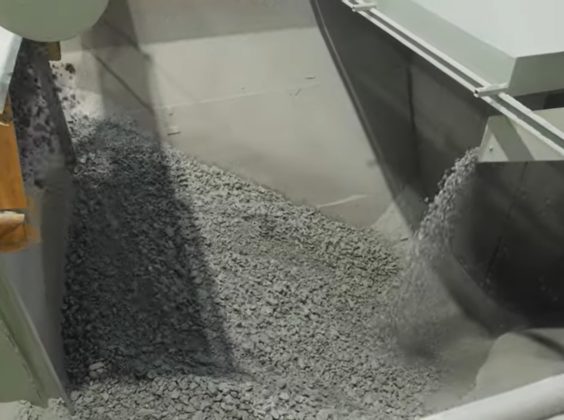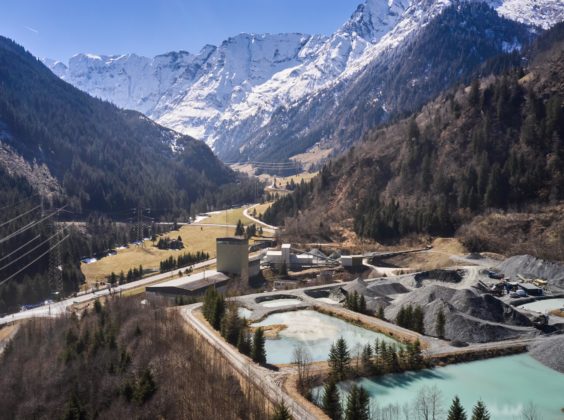TOMRA Mining has launched CONTAIN™, an answer that, it says, represents the following breakthrough in AI-powered ore sorting.
By analysing X-ray imagery in actual time, CONTAIN identifies visible patterns that conventional sorting techniques miss, giving operators exact management to optimise sorting to their particular wants, the corporate says.
The proprietary deep studying know-how is designed to reinforce the restoration of inclusion-type ores which can be tough to detect utilizing conventional sorting strategies.
Developed totally in-house by TOMRA’s software program engineers and mining consultants, CONTAIN makes use of convolutional neural networks to carry out real-time evaluation of X-ray imagery, visually classifying rocks based mostly on the likelihood of subsurface ore mineral inclusions. These embody advanced mineralisations corresponding to in tungsten, nickel and tin ores – supplies that historically end in excessive misclassification or extreme product loss.
“Our system was educated on tens of hundreds of ore samples and designed from the bottom up for sorting inclusion-type ores,” Stefan Jürgensen, Software program Crew Lead at TOMRA Mining, says. “With CONTAIN, operators can dynamically alter the grade-recovery threshold by way of a touchscreen interface, enabling exact management over yield and product specs.”
TOMRA says it has been a pioneer in making use of AI to the sphere of sensor-based sorting for many years. The corporate first carried out AI-driving picture processing in 1993 and later expanded its capabilities with machine studying in X-ray Transmission (XRT) and Close to-Infrared (NIR) sorting. In 2018, TOMRA established a devoted deep studying crew, accelerating the event of industrial-grade AI sorting platforms. This early and substantial funding culminated within the launch of OBTAIN™, which launched single-particle precision to excessive throughput ore sorting. Now, CONTAIN builds upon this basis with focused classification of inclusion-type ores – pushing the boundaries of automated sorting resolution making, it says.
Not like conventional optical sorting techniques, which frequently have limitations in detecting low-grade or inclusion-type ores, CONTAIN introduces a basically totally different method to classification. By analysing the construction of every rock utilizing superior deep studying algorithms, the system identifies delicate mineralogical patterns that point out the presence of helpful metals corresponding to tungsten, nickel or tin. Every rock is assigned a likelihood rating based mostly on its chance of containing mineralization beneath the floor, enabling exact, data-driven sorting choices. This functionality permits mining operations to adapt their methods in actual time – whether or not the aim is to maximise focus grade, minimise helpful materials loss, or align with processing value constraints.
CONTAIN is constructed for industrial-scale efficiency, TOMRA claims. As a result of it doesn’t depend on particular throughput or spacing on the belt, the system maintains pinpoint accuracy even in dense, fast-paced enter streams. This makes CONTAIN particularly efficient in high-volume processing crops the place consistency, pace and restoration charges are vital to profitability.
CONTAIN has been engineered to deal with a large spectrum of ore grades – from high-value deposits to low-grade, inclusion-rich rocks which have traditionally been tough to course of effectively. Standard sorting techniques may be configured to detect some low-grade materials, however they have an inclination to let massive volumes of gangue enter the product stream, diluting output and eroding profitability. In contrast, CONTAIN makes use of deep studying to categorise mineralisations with distinctive accuracy, enabling exact sorting thresholds that make the restoration of low-grade ores economically viable, TOMRA says.
Jürgensen added: “Current applied sciences may be configured to detect low-grade materials in such ores, however this leads to a excessive amount of waste rocks being sorted into the product stream, diluting the product past financial viability. CONTAIN is exceptionally correct in evaluating the worth of a rock, making sorting thresholds for such comparatively low-grade ores economically viable.”

Along with tungsten, nickel and tin, TOMRA is actively testing CONTAIN on gold and chromite, and is exploring expanded purposes in iron and copper. Whereas nonetheless within the early phases, preliminary outcomes point out promising potentialities for increasing purposes throughout a broader vary of ore sorts.
Subject trials at Wolfram Bergbau in Mittersill, Austria, confirmed the transformative potential of CONTAIN, in line with TOMRA.
Built-in alongside TOMRA’s newest COM XRT and OBTAIN applied sciences, the system delivered fast efficiency features. The operation quickly elevated complete plant throughput by 8%, achieved a 33% discount in ore mineral losses and recorded its lowest-ever tails grade. The visible impression of the enhancements was so putting throughout the first minutes of operation that the crew instantly requested a second set up.
The corporate mentioned: “What actually set CONTAIN aside was its potential to determine tungsten-bearing inclusions that may in any other case go undetected – notably these embedded deep inside host rock. Conventional sorting techniques typically fail to differentiate such delicate mineralisation, leading to both extreme gangue or compromised focus high quality. With CONTAIN, operators have been capable of finetune the stability between grade and restoration in actual time, producing constant, high-spec output with a better tails rejection quantity and diminished ore mineral losses. The downstream impact was a extra secure, environment friendly operation and a notable drop in total manufacturing prices.”

David Comtesse, Manufacturing Supervisor, Wolfram Bergbau-und Hütten AG, mentioned: “We have been completely overwhelmed by what CONTAIN may do. It picked up mineral inclusions we didn’t suppose have been detectable, and did it with unbelievable precision even at bigger grain sizes as much as 65 mm. It instantly modified the way in which we take into consideration sorting and processing. This isn’t simply an improve – it’s a totally new stage of efficiency.”
CONTAIN was designed to enrich and improve TOMRA’s sensor-based sorting ecosystem, working in live performance with COM XRT and OBTAIN to ship a complete, multi-layered method to ore processing, it says. Whereas every know-how performs a definite position – from density-based separation to particle detection and deep studying classification – they share a unified interface and operational synergy.
“This integration offers mining operations the flexibility to finetune efficiency throughout the complete sorting line, with data-driven management and real-time responsiveness,” the corporate added. “Whether or not the main target is on maximising restoration from advanced ores or reaching tighter product specs, the mixture of TOMRA’s applied sciences gives unmatched flexibility and precision in inclusion-type ore sorting. It additionally simplifies system scalability, permitting crops to evolve their capabilities with out overhauling present infrastructure, defending each efficiency and long-term funding.”




